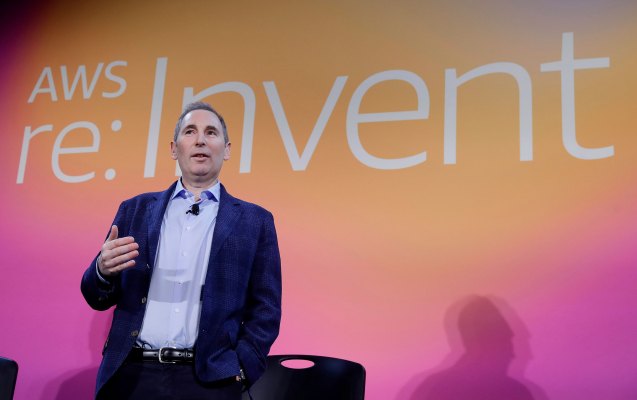Amazon CEO Andy Jassy is the definition of a company man. In an age when people switch jobs frequently, he has been at Amazon for 25 years, working his way up to president and CEO. But before he reached the corner office, he helped build Amazon Web Services, its cloud arm, into a $60 billion juggernaut.
It wasn’t exactly a rise from the mailroom, but Jassy was there as founder Jeff Bezos’ aide-de-camp when they came up with the idea of AWS in the early 2000s at an executive offsite. He helped build it. He nurtured it. He made it into the crown jewel of the company.
So when Bezos announced he was stepping down early last year, it didn’t take long for the organization to turn to Jassy, whose hard work at AWS and his deep understanding of company culture seemed to make him the perfect heir apparent.
But things haven’t necessarily gone as planned since he took over the leadership role in July 2021. Much of what has happened has been out of his control. Like many chief executives, he inherited the problems left behind by his predecessor.
During the pandemic, Amazon became the general store for the world. People stuck in lockdown turned to Amazon for their goods. The company’s revenues mushroomed and its workforce exploded, with the organization adding an astonishing 800,000 workers, mostly in its warehouses (per The Wall Street Journal). The future was bright, but as Jassy took over last year, people were heading out again.
Suddenly, everyone wasn’t buying everything online anymore. As we headed into 2022, other macroeconomic factors began to affect commerce — online and brick-and-mortar — as inflation soared and consumers’ buying power began to diminish. Add to that the higher cost of energy and persistent supply chain issues, and Amazon was suddenly facing some challenges that were beginning to have a serious impact on earnings.
None of that is the fault of Andy Jassy, but he’s not getting sympathy from many folks, certainly not stockholders. Over the last year, the stock price has dropped over 40%, which, compared to some SaaS stocks, looks pretty good, but it’s still a bitter pill for the company to swallow.
Where does Amazon make and lose money?
The Wall Street Journal reported this week that Jassy is looking to cut costs by slashing unprofitable business units. Nothing is beyond scrutiny, even the devices business, which includes the popular Alexa line of products.
If you have the time, it’s worth scrolling through Amazon’s most recent investor deck. It provides a granular look at its business over time and is useful to understand no matter where you sit in the world of technology.
How is Amazon doing? Here are some highlights from Q3, compared to year-ago results:
- Posted net sales growth of 15%
- Flipped from +2.5 billion worth of free cash flow to -$19.7 billion
- Saw its operating income fall from $4.9 billion to $2.5 billion
- Saw its net income fall from $3.2 billion to $2.9 billion
Amazon grew in aggregate, but every profit metric that we care about got worse. This means that some elements of Amazon became less profitable, even as the company itself grew. That’s not what we tend to see from behemoths like Amazon because it implies negative operating leverage — but let’s not get lost in financial arcana.
Where does Amazon make and lose money? In its third quarter, here’s the breakdown of its major units:
- North American e-commerce: $78.8 billion in revenue, -$412 million operating profit
- International e-commerce: $27.7 billion in revenue, -$2.5 billion operating profit
- AWS: $20.5 billion in revenue, $5.4 billion in operating profit
That’s clear enough. The part of Amazon that Jassy built is still growing well and kicking out massive operating incomes. Enough, in fact, to paper over the fact that Amazon’s domestic and foreign e-commerce operations wrapped Q3 2022 on a roughly $12 billion negative operating income run rate. That’s not good!
You can see, therefore, where cost-cutting comes into play; two of Amazon’s three larger efforts are bleeding when it comes to operating income. That’s a difficult challenge for a company that is famous for quick growth and deferred profits.
When growth slows, profits matter more, and Amazon needs to have more groups internally making buckets of duckets apart from AWS (that AWS has fierce competition is not news to the TechCrunch audience, we know).
Jassy brought in an old friend, Adam Selipsky, to run the cloud division. AWS has always been a cash cow, but even there, growth has slowed to 27.5%, down from 33% the prior quarter. That’s a lot, actually.
The economic slings and arrows are having an impact on the cloud business, too, and CFO Brian Olsavsky warned in the Q3 call with analysts that it might fall further as companies try to find ways to cut back on their cloud spending.
Olsavsky pointed out that AWS has to balance rising energy costs, a strong dollar and customer spending declines while still trying to keep growing the business. It’s not always an easy line to walk.
Broadly, if you aren’t making enough money, you can try to expand revenues, generating more gross profit while holding costs flat. That will expand your profitability. Or you can cut costs. The latter is likely easier to do when you are facing a slowdown in your core business, and even in your growth business. Which is where Amazon finds itself. So, down costs must go.
That puts Jassy in a difficult position. He worked hard to earn his seat in the corner office, but like a coach taking over for a legend who brought lots of world championships, fans (or, in this case, stockholders) are clamoring for more of the same. Jassy is left to deal with the fallout, fair or not.
